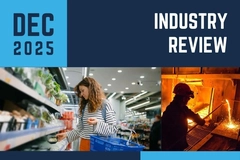Connected packaging technologies: Advancing consumer engagement and waste management

Connected packaging is transforming brand-consumer engagement through interactive experiences, real-time product tracking, and AI-driven personalization. We speak to industry players Appetite Creative, Polytag, and Markem-Imaje about how adopting connected packaging can be a cost-effective way for brands to stay on top of the latest market trends.
“Connected packaging has emerged as a powerful tool for brands seeking deeper consumer engagement. Our research reveals that 66.7% of survey respondents recognize its ability to foster customer loyalty through personalization. By transforming packaging into an interactive touchpoint, brands can create tailored experiences that resonate with individual consumers,” Jenny Stanley, managing director at Appetite Creative, tells Packaging Insights.
“Perhaps most compelling is connected packaging’s role as a direct communication channel. Nearly 60% of respondents highlight its value in facilitating customer conversations without additional media costs. This direct line to consumers comes at a time when traditional advertising channels face increasing fragmentation and cost barriers.”
Alice Rackley, CEO of Polytag, adds: “One of the biggest trends in connected packaging by far is enhanced traceability — brands increasingly recognize that what can be measured can be managed. And once you master the art of measurement, making strategic decisions becomes significantly easier, improving sustainability credentials, recycling rates, and overall supply chain efficiency.”
Rackley identifies two important driving forces behind consumer engagement and traceability trends. “With real-time insights into supply chain performance and consumer behavior, brands can reduce waste, streamline operations, and provide clear environmental impact data, aligning packaging innovation with both business and sustainability goals.”
Stephen Gryczka, Strategy and Corporate Development director at Markem-Imaje points to the key trends enabling connected packaging: “Electronic tags or labels — such as RFID or NFC tags — contain product data, which could be accessed via consumer mobile phone scans.”
Markem-Imaje offers consulting and implementation services to ensure connected packaging is compliant with regulations, follows global standards, and meets the brand’s application needs.
“Digitally connected barcodes, such as GS1 Digital Link, offer significantly more data capacity for additional product and production data and enable web URLs to link mobile phone scans to digital landing pages or applications, allowing for enhanced consumer engagement,” adds Gryczka.
AI-driven solutions
Jenny Stanley, managing director at Appetite Creative (Image credit: Appetite Creative).Earlier this year, Appetite Creative unveiled an AI-driven interactive smart packaging experience for Sunny Oil.
“The web app-based connected experience gave users the opportunity to play games to win prizes, learn new cooking hacks, and take part in fun daily activities. Using AI to make life easier, users could select ingredients from the ‘my fridge’ list, which suggests recipes combining existing items found in the fridge,” says Stanley.
“Our AI-powered features like those in the Sunny Oil campaign provide personalized experiences that adapt to user preferences, creating ‘smart conversations’ with consumers.”
She argues that AI will be “the driving force” behind the next generation of connected packaging innovations. “AI algorithms will process vast amounts of consumer interaction data, enabling experiences that adapt in real-time to individual preferences and behaviors.”
“These systems will move beyond simple information delivery to create genuine dialogues with consumers, fostering meaningful relationships that extend far beyond the point of purchase.”
Discussing potential constraints to the introduction of AI-powered connected packaging experiences, Stanley says that they may entail ongoing operational costs, unlike traditional static QR experiences.
“These include per-query expenses, model training, scaling considerations, image generation capabilities, storage requirements, and maintenance needs. These continuous costs require careful budgeting and planning, which could be a hurdle to adoption,” she explains.
“Companies must justify these investments by weighing costs against benefits. The most compelling arguments include demonstrably higher engagement rates, increased customer lifetime value, richer first-party data collection, and reduced customer service expenses through automated information delivery.”
QR codes and UV tags
 Alice Rackley, CEO of Polytag (Image credit: Polytag).Polytag offers advanced, end-to-end connected packaging solutions to brands and retailers, leveraging both QR codes and invisible UV tags.
Alice Rackley, CEO of Polytag (Image credit: Polytag).Polytag offers advanced, end-to-end connected packaging solutions to brands and retailers, leveraging both QR codes and invisible UV tags.
“Our solutions span a wide range of applications, from tracking and tracing packaging to enabling direct, brand-to-consumer engagement, as well as providing real-time insights into the lifecycle of single-use plastic,” says Rackley.
“Our latest launch is QR Squared, a brand-new digital service designed to future-proof packaging across all sectors. Powered by GS1 standards, QR Squared introduces fully certified, compliant, and secure QR codes, offering a seamless transition from traditional barcodes to 2D barcodes.”
QR Squared is designed to cater to businesses of a broad range of shapes, sectors, and sizes, “from large enterprises to challenger brands,” allowing them to create and download digital link QR codes with ease.
“Today’s advanced technology allows brands to track their products throughout the supply chain, from production to recycling. Our own technologies, such as our QR codes and invisible UV tags, enable real-time data collection, helping companies ensure product authenticity, streamline logistics, and optimize sustainability efforts,” Rackley continues.
She says that this trend is being driven, in part, by evolving regulatory frameworks, including the UK’s EPR and broader circular economy initiatives. “Staying ahead of these changes is crucial for businesses looking to future-proof and ensure the success of packaging strategies.”
“Unlike some technologies that require significant packaging redesigns or costly infrastructure changes, Polytag’s QR codes and UV tags can be easily incorporated without disrupting current processes. Our user-friendly dashboard is designed to be intuitive, making it accessible even for those with limited technical expertise.”
Sunrise 2027 initiative
Markem-Imaje’s Gryczka points out that alongside QR codes, RFID and NFC labels can also facilitate “connecting digital information and experiences to physical products, enabling brands to improve product transparency, engage with consumers, promote their brand and trace their products across the supply chain.”
Stephen Gryczka, Strategy and Corporate Development director at Markem-Imaje (Image credit: Markem-Imaje).“Electronic RFID and NFC labels have been available for over 20 years. While some industries have implemented electronic tags or labels for connected packaging, their higher cost has limited broader adoption across all markets,” he explains.
“More recently, the launch of the GS1 Digital Link 2D barcode and the Sunrise 2027 initiative — encouraging retailers and brands to transition from traditional 1D barcodes to Digital Link 2D barcodes — presents an opportunity for brands and retailers to adopt a standardized, more functional and cost-effective solution for connected packaging that can benefit brands, retailers and consumers alike.”
Gryczka says that the widespread availability and support of native 2D QR barcode scanning on Android and iOS devices, along with the Sunrise 2027 initiative, has created a standard and broadly adopted way for brands to implement connected packaging solutions.
“With Sunrise 2027 approaching, expect a significant increase in brands and industry players adopting Digital Link 2D barcodes to provide more digital product information to consumers and retailers.”
He argues that most brands use connected packaging to link consumers to a basic URL or product landing page, which offers limited engagement.
“The next stage of development will involve embedding real-time product and production data into Digital Link barcodes, unlocking greater efficiency, improved conversion, and increased consumer engagement.”
“Two-way communication between brands and consumers will also become more sophisticated, creating new opportunities for direct engagement and personalized experiences.”










